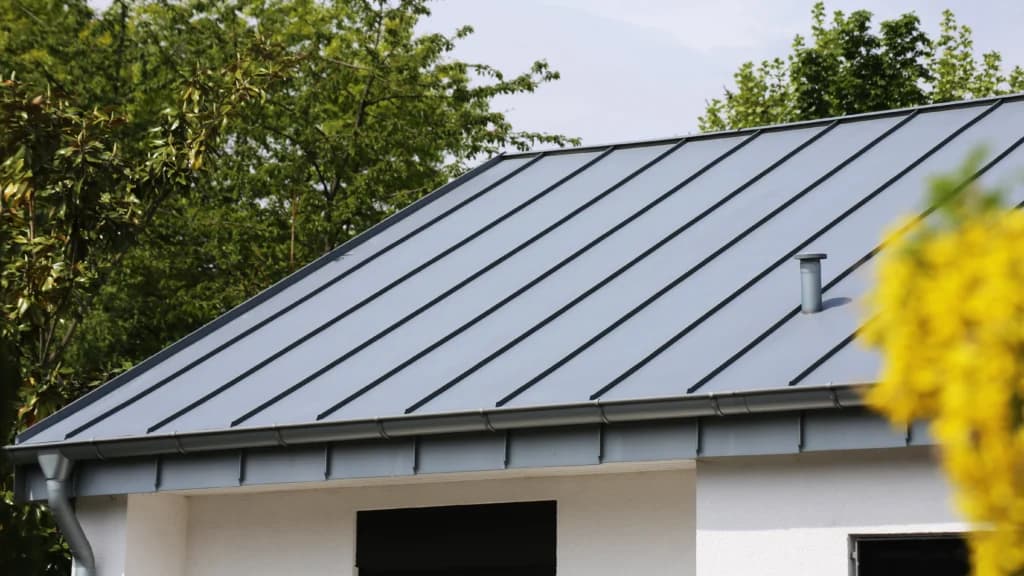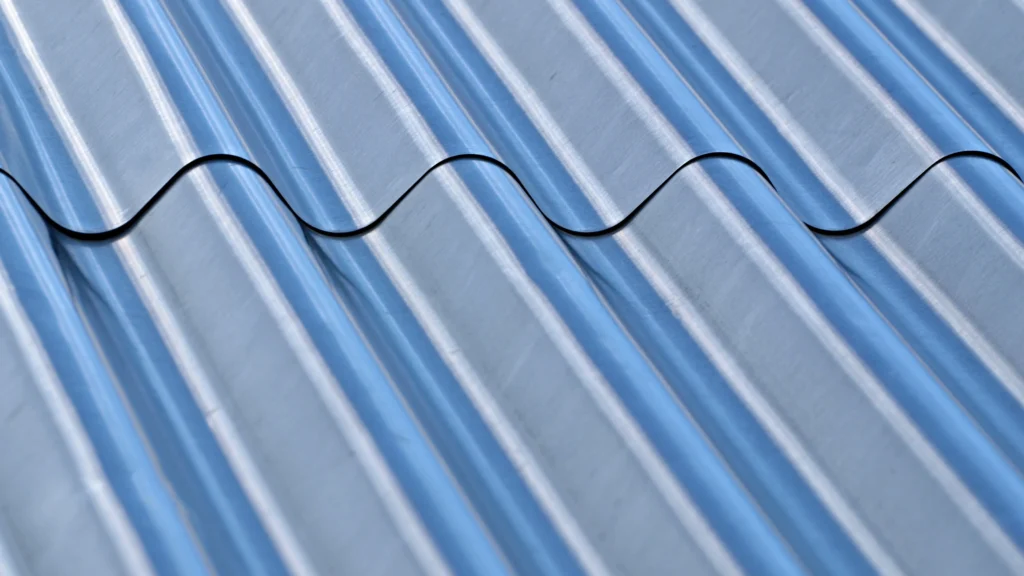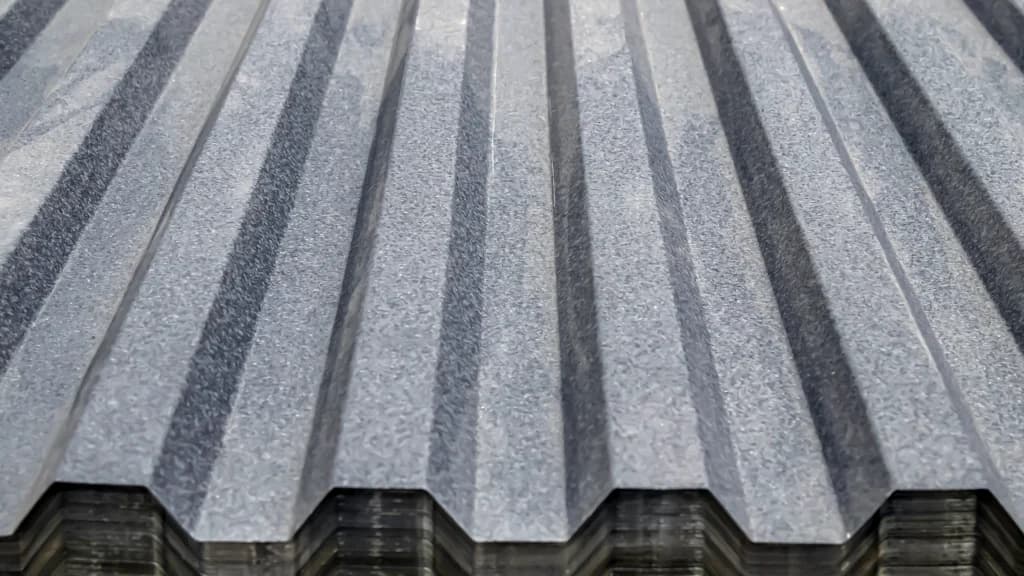
Why metal roofs and solar panels are an excellent match
If you’re a homeowner with a sleek metal roof, you’re in luck. Not only are solar panels an excellent investment, but they also work incredibly well with a metal roof. Thanks to their durability, structural strength, and reflective properties, metal roofs are one of the most compatible foundations for solar.
In fact, Mark Gies, Vice-Chair of the Solar Energy Industries Association (SEIA) Mounting Systems Manufacturers Committee, called them the “most solar-friendly roof type available” in Metal Construction News.
In this guide, we’ll explore the key benefits of combining solar with a metal roof — from long-term durability to improved efficiency — and walk through how installation works across different metal roof styles.
In this article:
- Why metal roofs and solar panels pair so well
- Mounting solar panels on metal roofs
- How to choose the right installer
- Metal roofing is a great match for solar panels
- Frequently asked questions
Why metal roofs and solar panels pair so well
Metal roofs are an ideal foundation for solar panels, and can also have added benefits for the solar system itself. Let’s look at some details.
Longevity
A metal roof’s lifespan of 40-70 years is a key benefit for solar, as asphalt shingles generally only last 15-30 years. Solar panels are a long-term investment often backed by 25-year performance warranties and 10-25 year product warranties against defects. Pairing them with a durable metal roof ensures you won’t have to remove your entire system prematurely just to fix the roof underneath — a costly and avoidable expense.
Curious about what impacts solar panel lifespan and how warranties factor in? Check out our related article: How long do solar panels last?
Cooling effect boosts efficiency
Some metal roofs — especially those with reflective coatings or lighter colors — are classified as “cool roofs.” These surfaces are designed to reflect more sunlight and absorb less heat than darker roofing materials.
In one study published in the International Journal of Electrical Power & Energy Systems, a coated white metal roof used in a large solar microgrid project saw a 10.4% boost in panel efficiency and a nearly 4°F drop in roof temperature under test conditions. While these results reflect a setup and specific results that aren’t typical for residential homes, they highlight an important benefit: cool roofs help reduce heat buildup, which can ease thermal stress on your solar equipment, support more consistent performance during hot weather, and potentially extend your system’s lifespan.
Lower energy bills and environmental footprint
Pairing a cool metal roof with solar panels creates a powerful one-two punch: your panels generate clean electricity that directly lowers your utility bills, while the reflective roof surface helps your home stay cooler.
According to the EPA, cool roofs reduce the amount of heat transferred indoors and can lower peak air conditioning demand by 11%-27% in residential buildings. That means your HVAC system doesn’t have to work as hard — especially in warm climates — which can help cut overall energy use and reduce greenhouse gas emissions. Together, solar and a cool metal roof offer both immediate savings and long-term environmental benefits.
Mounting solar panels on metal roofs
In addition to their efficiency and environmental upsides, metal roofs offer a sturdy and versatile platform for solar panel installation. One of the biggest factors that affects how panels are mounted is the roof style itself.
Some metal roofs allow for simple clamp-on attachments, while others require more involved methods, like drilling and bracketing. In either case, metal roofing is strong, stable, and well-suited for long-term solar — but it’s still important to review your roof’s warranty and work with an installer who understands how to preserve it. Here’s how solar panels are mounted on a few common metal roof types.
Standing seam metal roofs
These roofs have long, raised seams — the vertical lines you can see running from the top of the roof to the bottom. This design makes them one of the most solar-friendly options. Installers can use special clamps that attach directly to the seams, so there’s no need to drill into the roof. This clamp-on method helps reduce labor costs, avoids puncturing the roof surface, and helps preserve your roof warranty.

Corrugated metal roofs
Corrugated roofs have a rippled or wavy appearance, with repeating high and low points across the surface. To install solar on this type, installers usually drill into the high points near the top of the roof, away from the lower sections where water drains. Then they attach mounting brackets (the base that holds the panel system) and seal the area carefully to prevent leaks. This method is safe and commonly used when standing seams aren’t available.

Trapezoidal metal roofs
These roofs have a more angular or boxy appearance than corrugated roofs, with flatter tops and steeper sides. Like corrugated designs, they require drilling and specialized brackets to hold the solar panels in place. Because trapezoidal patterns vary across manufacturers, installers will choose hardware that matches your exact roof shape to ensure a secure, weatherproof fit.

How to choose the right installer
Choosing the right installer is key to a smooth, long-lasting solar installation — especially with a metal roof, where mounting techniques can vary by roof type.
Start by looking for professionals with more advanced credentials, such as certification from the North American Board of Certified Energy Practitioners (NABCEP), and deep familiarity with your local permitting codes and weather conditions. A qualified installer should also be able to clearly explain your system warranties and how their work may affect your existing roof warranty.
While many solar professionals are experienced with shingle roofs, not all have worked with metal roofing systems. Be sure to check reviews from other homeowners with metal roofs, or ask the installer directly for examples of similar past projects.
The first step is getting in touch with multiple qualified professionals so you can compare their experience and approach. Aurora Solar makes this easy by helping you connect with multiple vetted installers, giving you a strong starting point to ask the right questions and find the best fit for your project. It’s a simple way to explore your options, view upfront estimates on pricing and bill savings, and evaluate providers — all in one place.
Once you’re connected, here are some questions you can ask a potential installer about their experience with metal roofs:
- Are you familiar with the type of metal roof on my home?
- How many metal roof solar installations have you completed?
- What kind of sealing and waterproofing methods will you use?
- Can you walk me through how you’ll mount the system to my roof?
- Will your team need to drill into the roof as part of your roof fall protection system? How will those holes be sealed?
- Do you offer any post-installation inspection or leak protection guarantees?
Metal roofing is a great match for solar panels
Metal roofs and solar panels are a natural fit. Both are built to last for decades, help reduce your home’s carbon footprint, and add a sleek, modern look to your exterior. Plus, the reflective surface of many metal roofs can reduce rooftop temperatures, helping your solar system operate more efficiently in hot weather. For durability, performance, and long-term value, metal roofs are one of the best foundations you can choose for going solar.
Frequently asked questions
Is a metal roof good for solar panels?
Yes. Metal roofs are one of the most compatible roof types for solar. They’re durable, long-lasting, and can often help improve system efficiency in hot climates by reflecting heat and keeping rooftop temperatures lower. Plus, because metal roofs typically outlast the solar panels themselves, you’re less likely to face the costly hassle of removing and reinstalling your system just to replace the roof.
What are the disadvantages of a metal roof?
The main consideration is how solar panels are mounted. Some roof types, like corrugated or trapezoidal metal, require drilling — and if not done properly, this could void your roof warranty. Always confirm with both your roofing manufacturer and solar installer that the mounting approach is compatible with your warranty. Standing seam metal roofs, on the other hand, allow for clamp-on mounting with no penetrations.
Can solar panels be installed on any type of metal roof?
Yes. Solar panels can be installed on most metal roof types, including standing seam, corrugated, and trapezoidal designs. The main difference is the mounting method: standing seam roofs allow for clamp-on systems with no drilling, while other types typically require carefully sealed penetrations and mounting brackets.

